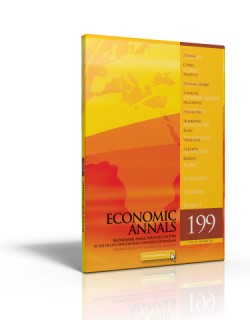A SYNTHESIS OF THE UZAWA-LUCAS MODEL WITH THE WALRASIAN-GENERAL-EQUILIBRIUM AND NEOCLASSICAL-GROWTH THEORIES
##plugins.themes.bootstrap3.article.main##
##plugins.themes.bootstrap3.article.sidebar##
Wei-Bin Zhang
Abstract
This paper proposes a dynamic economic model of wealth accumulation and human capital accumulation with endogenous education. It is an extension of the Uzawa-Lucas model of a heterogeneous household economy with multiple ways of human capital accumulation. In addition to learning by education in the Uzawa-Lucas model (Uzawa, 1965; Lucas, 1988), we also consider Arrow’s ‘learning by producing’ (Arrow, 1962) and Zhang’s ‘learning by consuming’ (creative learning, Zhang, 2007) in the human capital accumulation equation. The economic system consists of one production sector and one education sector. Households differ in propensity to save, to obtain education, to consume, and in learning abilities. The model describes a dynamic interdependence between wealth accumulation, human capital accumulation, and division of labour with endogenous wealth and income distribution in perfect competition. We simulate the model to demonstrate the existence of equilibrium points and the motion of the dynamic system. We also demonstrate how changes in the propensity to obtain education, the population, the propensity to save, and the education sector’s total productivity affect economic development.
##plugins.themes.bootstrap3.article.details##
Keywords
learning by producing, learning by consuming, learning by education, wealth and income distribution, heterogeneous households
JEL Classification
O41
Issue
Section
Articles
How to Cite
Zhang, W.-B. (2013). A SYNTHESIS OF THE UZAWA-LUCAS MODEL WITH THE WALRASIAN-GENERAL-EQUILIBRIUM AND NEOCLASSICAL-GROWTH THEORIES. Economic Annals, 58(199), 7-38. https://doi.org/10.2298/EKA1399007Z
How to Cite
Zhang, W.-B. (2013). A SYNTHESIS OF THE UZAWA-LUCAS MODEL WITH THE WALRASIAN-GENERAL-EQUILIBRIUM AND NEOCLASSICAL-GROWTH THEORIES. Economic Annals, 58(199), 7-38. https://doi.org/10.2298/EKA1399007Z

